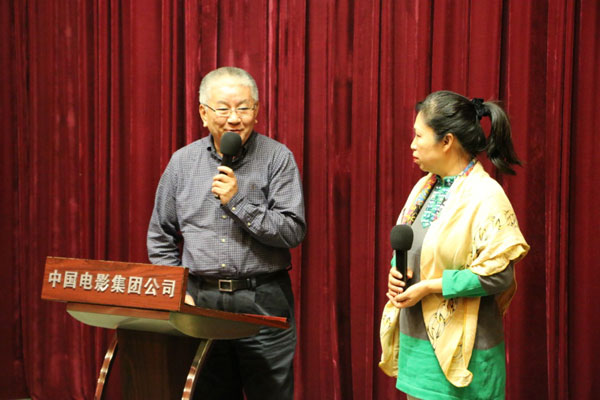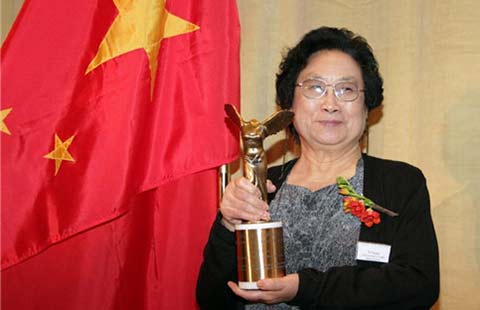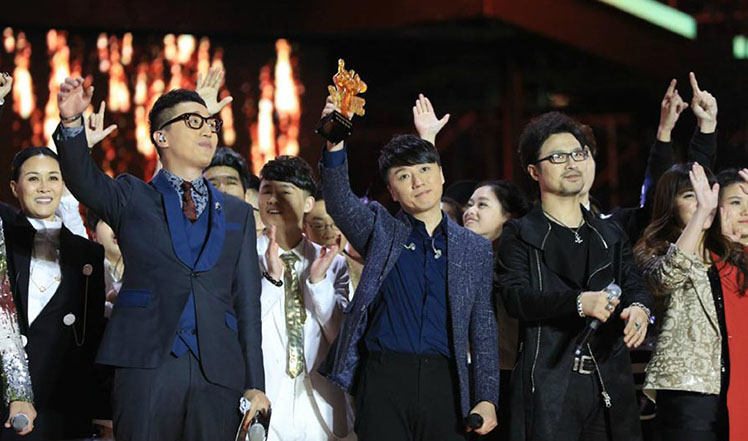War prisoner documentary reveals insights from WWII
Updated: 2015-10-09 13:55
(china.org.cn)
|
||||||||
 |
|
Shen Haofang, director of "Under Bayonets and Barbed Wire," addresses the seminar in Beijing, Sept. 28, 2015. [Photo/China.org.cn] |
"Under Bayonets and Barbed Wire" is a US-China co-production documentary directed by Shen Haofang, who directed "The Happy Life of Talkative Zhang Damin" as well as "Ren Changxia," in collaboration with predominant American sound effects editor Richard L. Anderson known for his involvement in the Indiana Jones series and "The Lion King".
The film started with an introduction of the Mukden prisoner of war camp that was established in Shenyang 70 years ago. It developed in a documentary style and told the story of the allied prisoners during the Second World War.
In order to create a unique landscape of the Second World War, to make more understandable the relations between the Oriental Main Battlefield and the worldwide Anti-Fascist War and to reveal the untold stories to the audience, directors interviewed a number of witnesses of the War and have combined oral history with historical records. Some accounts were even collected from the U.S. National Archives, Washington DC and the Mukden prisoner site museum.
With the demonstration of these precious historical records and the interview of the witnesses as the skeleton of the film, the two directors have managed to explain the strategic consideration of the Japanese armies behind its decision to move those prisoners from Southeast Asia to Northeast China during the War. Richard L. Anderson himself appeared in scenes to interview several American veterans who once lived in the Mukden prisoner of war camp.
The film adopted a humanitarian perspective to reconstruct what happened to these witnesses. Such manifestations will become precious first-hand historical records that will contribute to shared historical memories across nations and countries, reminding people of the hard-fought battle for peace.
The fact that the film is co-produced by directors from China and the US is itself a manifestation of the cross-cultural and diversified perspectives on the history of the Second World War. With American prisoners in the Far East battlefield as a unique cutting point, directors have attempted to be creative in production techniques by combining fragments of the Oriental Battlefield with the general picture of the Second World War.
Richard L. Anderson has been studying the history of the Mukden prisoner of war camp for a considerable amount of time and it was on his agenda to produce such a documentary and to promote it in the United States. Therefore, his involvement has made the film more of a clash of diversified perspectives and opinions based on mutual respect for historical facts than a mere cooperation in the production of art. Such collaborations and clashes have endowed the film with a broader perspective, a more fact-respecting story and the possibility of greater global influence.
Shen Haofang told the audiences, "What impressed me the most were those American veterans, who are in their 90's. They talked about the ordeals in a very easy and open-minded fashion, but still touching. History has moved on for decades but they were willing to look back on their memories, I think that was the most precious content in this film."
The film screening was followed by a heated discussion on the social implications, shooting and expression technique of the film. In addition to complimenting the film and its first-hand rare materials (some veterans interviewed died just after finishing the interview for the documentary), some also pointed out that the film used the recurrence technique and asked actors to reenact some scenes, which combined the documentary with feature film elements, and that the film focused too much on a one-sided story.
Gao Wei, research fellow at the Center for China and Globalization (CCG), tutor at the Alliance for Global Youth Leadership (GYL) with a PhD from Tsinghua University initiated the seminar. He introduced that the seminar was held in the hope that the intelligentsia elites with global views and a strong sense of social responsibility could gather together and provide film and art producers with insightful suggestions. Such forms of discussion may contribute to the development of a softer "prisoners of war" image as it invites diversified perspectives on how a better Chinese story can be told.
Wu Gang, Deputy Editor-In-Chief of China National Radio Online, said the film demonstrates the conflicts and looks at the stories of humanitarianism in WWII and how human beings pursued fundamental dignity.
The seminar has gone beyond a discussion on the art of film. It was more of a seminar on how China can promote its films to the world. Fruitful outcomes have also been achieved as guests offered insights on how Chinese film makers could optimize their techniques of expression, how Chinese stories could be told worldwide in a more welcome manner and how China's image and spirit can be spread around the world.
The film debuted in Chinese theaters on Sept. 17, 2015 and is preparing for its US release.

 Top 10 most competitive economies
Top 10 most competitive economies
 Cold wave sweeps through China
Cold wave sweeps through China
 Taking a peek
Taking a peek
 News you don't wanna miss over the National Day holiday
News you don't wanna miss over the National Day holiday
 TCM knacks to fight post-holiday syndrome
TCM knacks to fight post-holiday syndrome
 Zhang Lei wins fourth season of Voice of China
Zhang Lei wins fourth season of Voice of China
 Travel rush around China as National Day holidays end
Travel rush around China as National Day holidays end-
 Rising yuan use may lift IMF basket prospects
Rising yuan use may lift IMF basket prospects
Most Viewed
Editor's Picks

|

|

|

|

|

|
Today's Top News
Tu first Chinese to win Nobel Prize in Medicine
Huntsman says Sino-US relationship needs common goals
Xi pledges $2 billion to help developing countries
Young people from US look forward to Xi's state visit: Survey
US to accept more refugees than planned
Li calls on State-owned firms to tap more global markets
Apple's iOS App Store suffers first major attack
Japan enacts new security laws to overturn postwar pacifism
US Weekly

|

|







